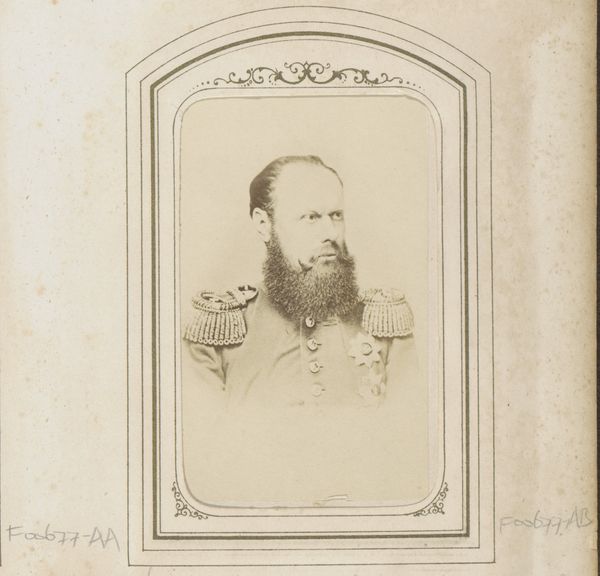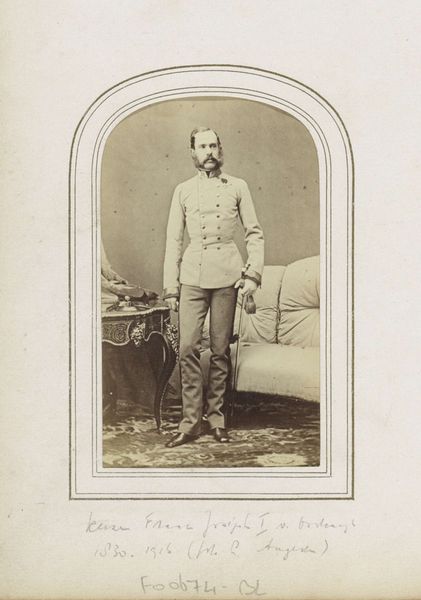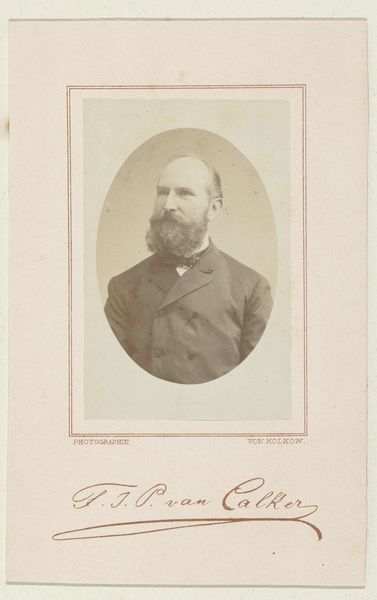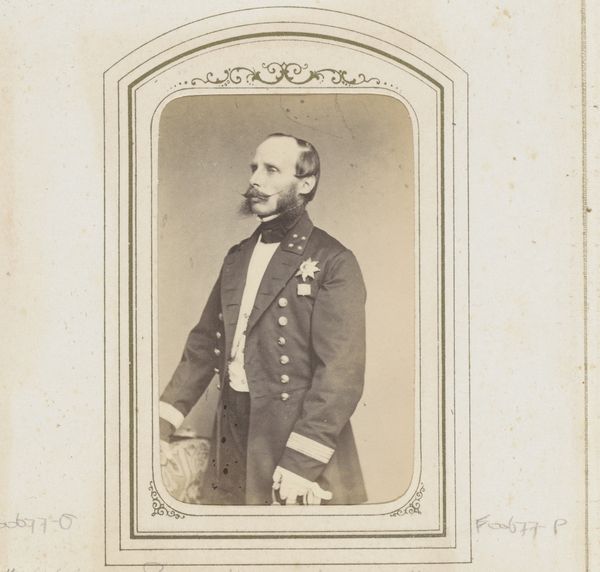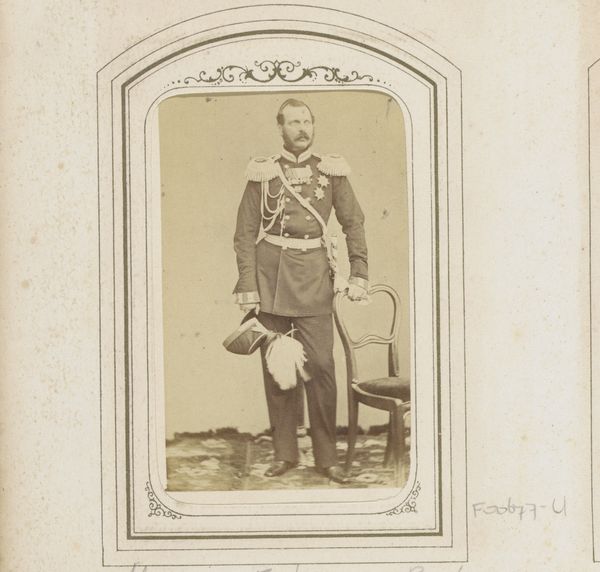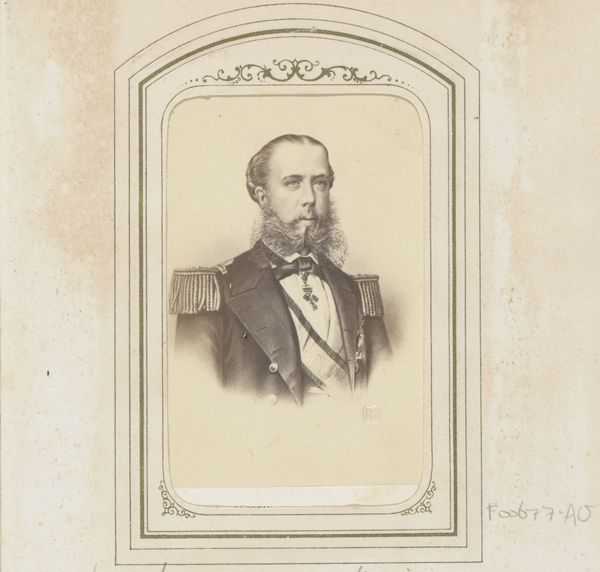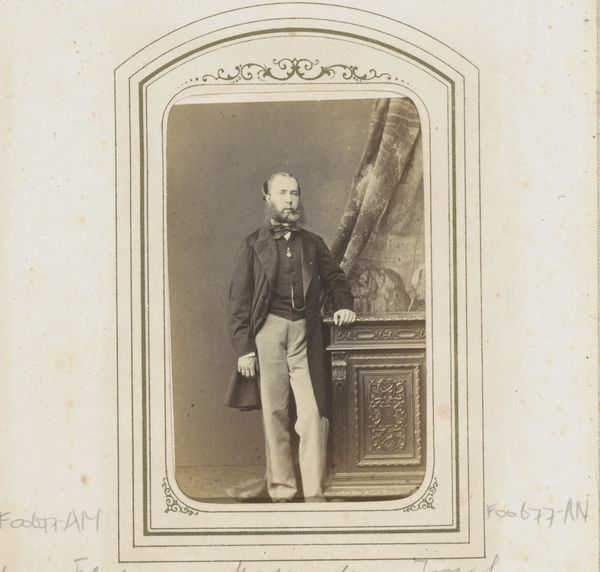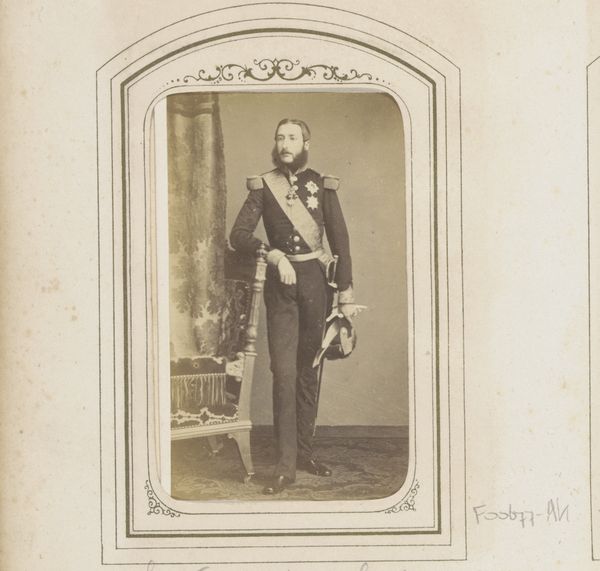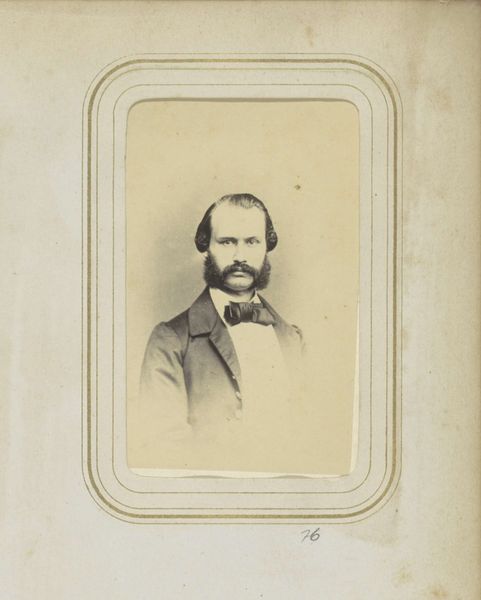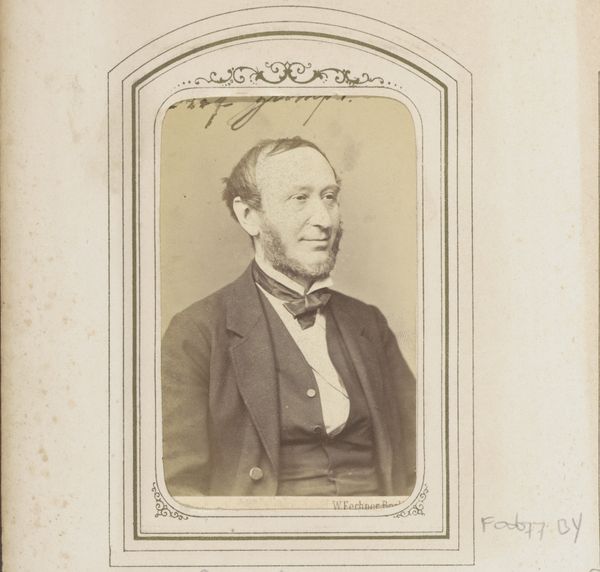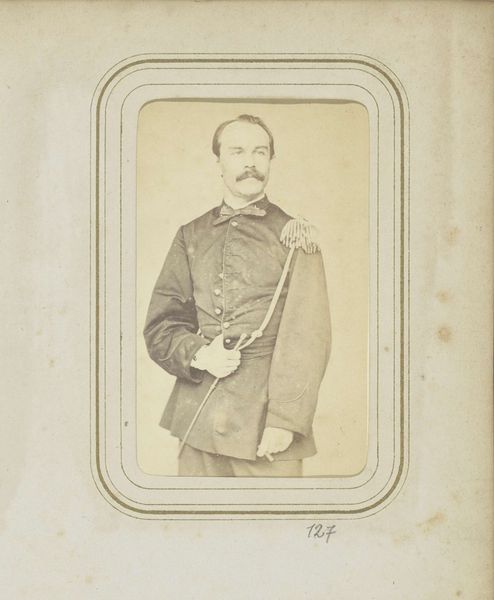
Dimensions: height 85 mm, width 53 mm
Copyright: Rijks Museum: Open Domain
Editor: Here we have a photograph, a gelatin-silver print entitled "Portret van Karel XV, koning van Zweden en Noorwegen", placing it somewhere between 1860 and 1875, by Math. Hansen. I'm struck by how regal it feels, the king's posture is so upright, his gaze firm. What strikes you most about this portrait? Curator: What's immediately fascinating is the choice of photography to portray royalty at this time. Photography was relatively new. Instead of commissioning a painted portrait, which historically solidified power, Karel XV opted for a medium that, despite its growing popularity, was still associated with the middle classes. What statement might he have been trying to make? Editor: Perhaps suggesting a more modern, approachable image of the monarchy? Was photography seen as more "democratic" in some way? Curator: Exactly. Think about the political landscape. The 19th century saw significant shifts in power, the rise of democratic ideals. A photograph, mass-producible, allows for wider circulation of the King's image than a unique painted portrait ever could. It's image crafting, signaling connection to the people. The choice of photography may then not simply be an artistic one, but a political statement in itself. What do you think the effect of this technology was on how the public viewed leadership at this time? Editor: That's so interesting! It democratized access to the King's image but also makes him more... real? More tangible than an idealized painting. The uniform seems so serious too, but then we remember he was likely trying to create a modern image, one more grounded and aware of political shift. Curator: Precisely. It’s a delicate balancing act between maintaining the traditional aura of authority and adapting to a changing socio-political landscape. Hansen’s portrait isn’t just a representation of the King, it's a document of the changing relationship between the monarchy and the masses. Editor: This really changes how I view photographs like this; seeing beyond the person and seeing the art in context. Thanks.
Comments
No comments
Be the first to comment and join the conversation on the ultimate creative platform.
